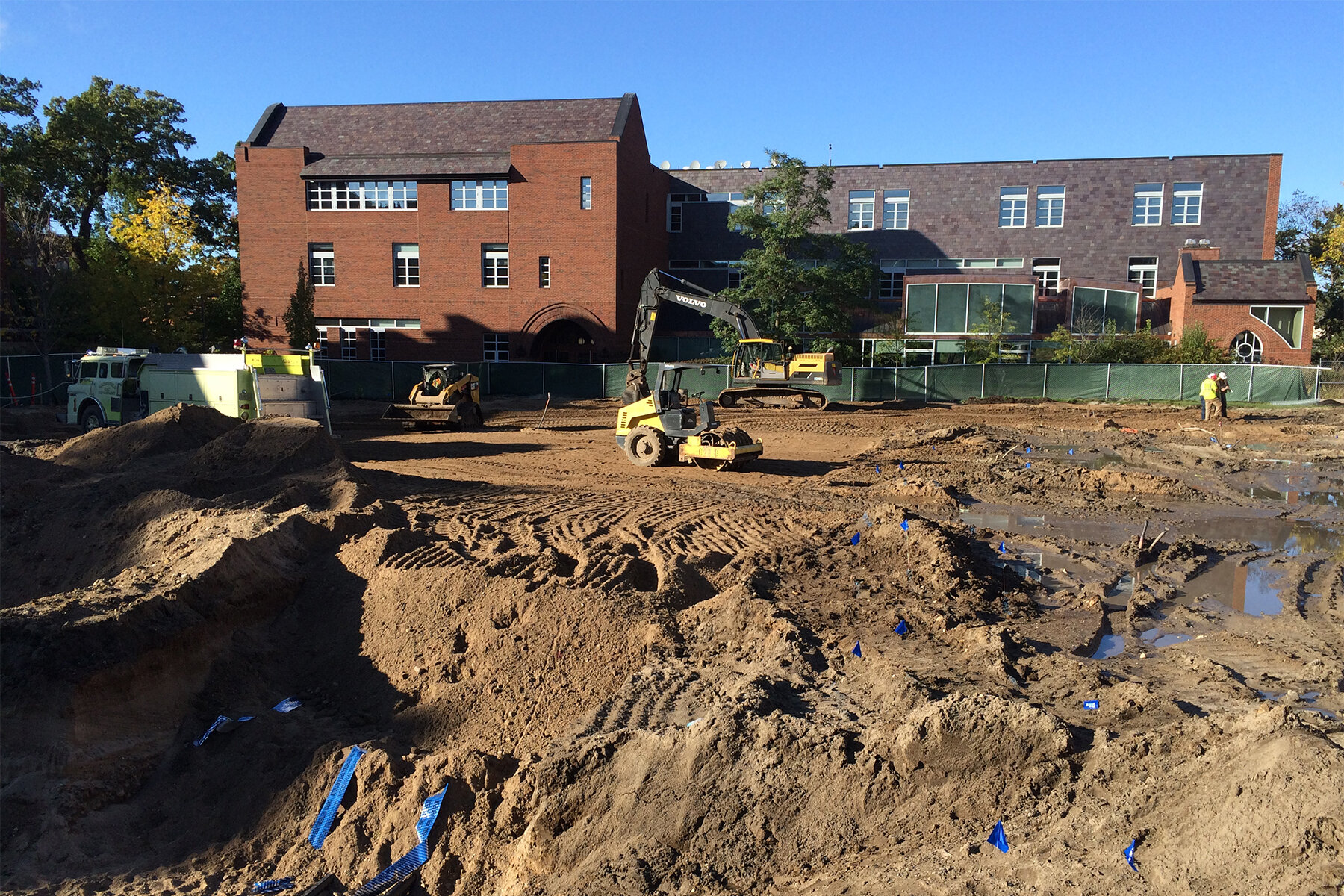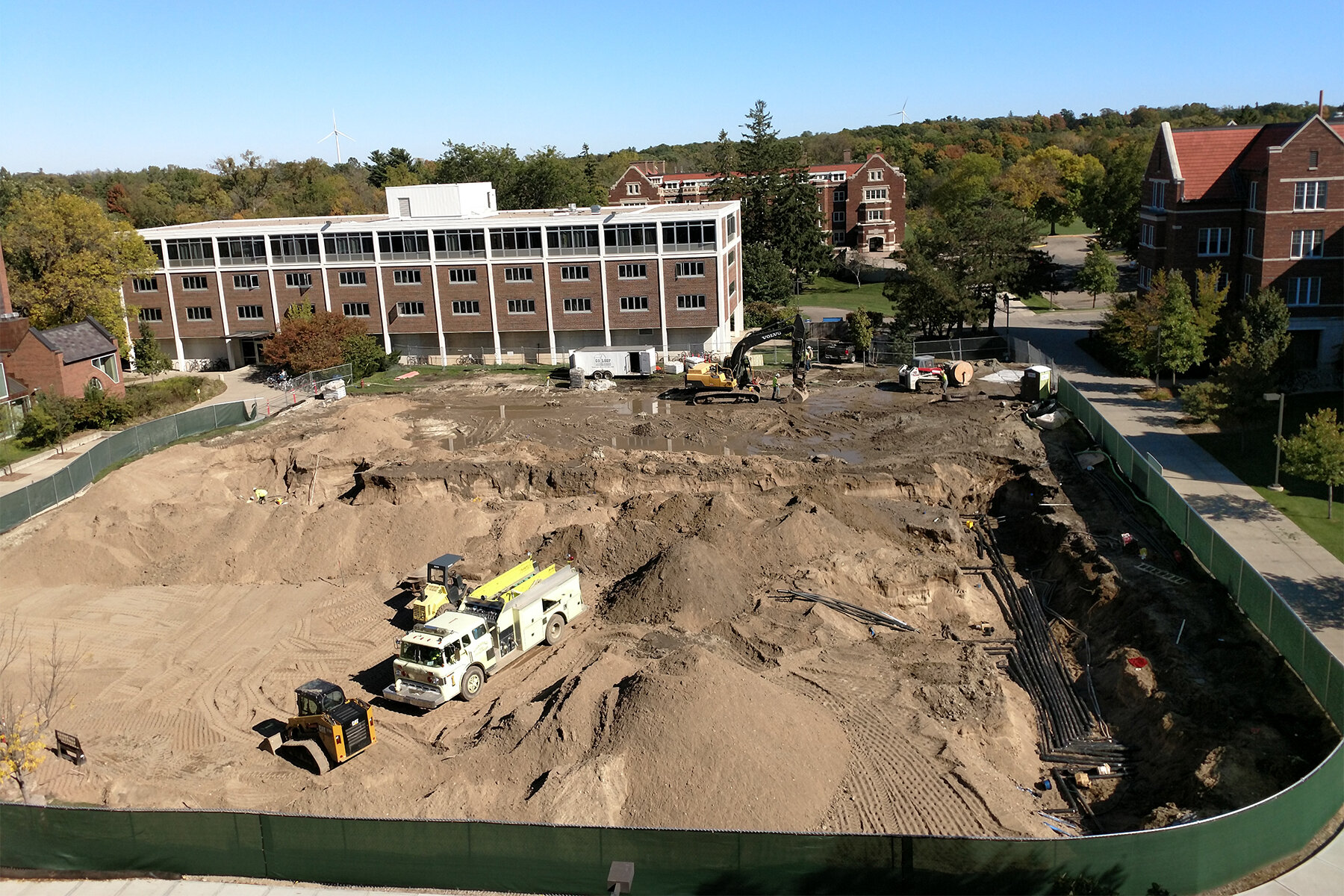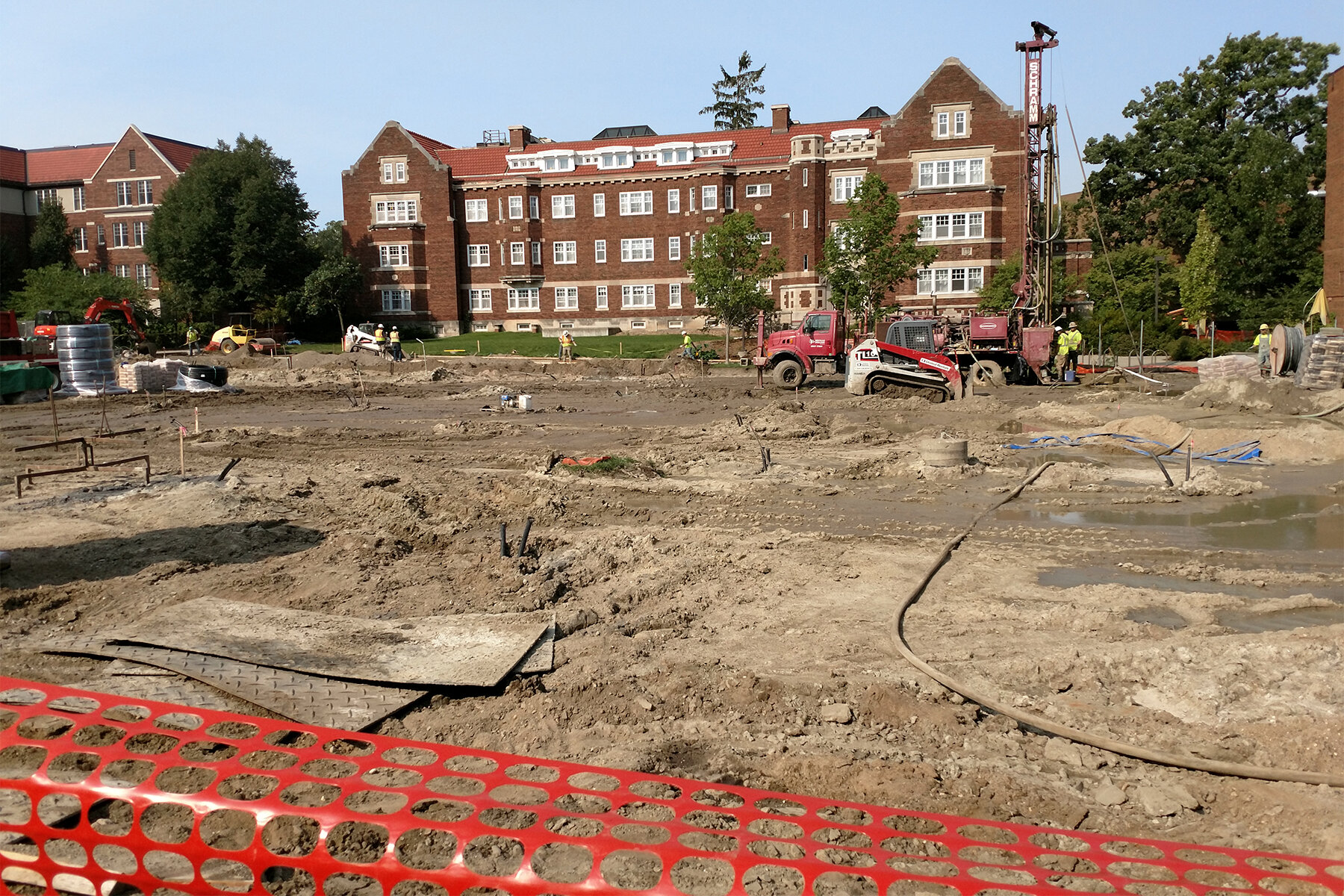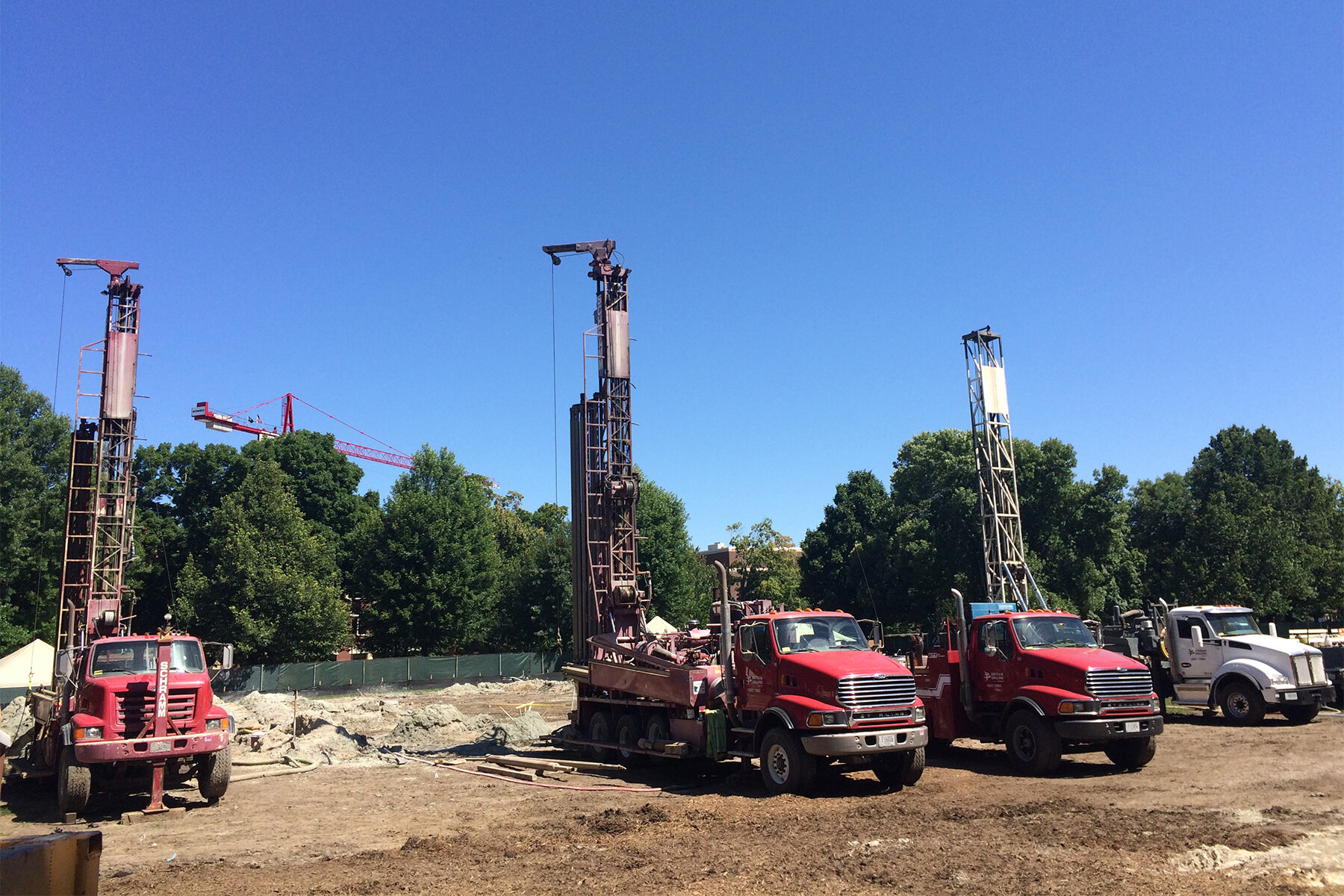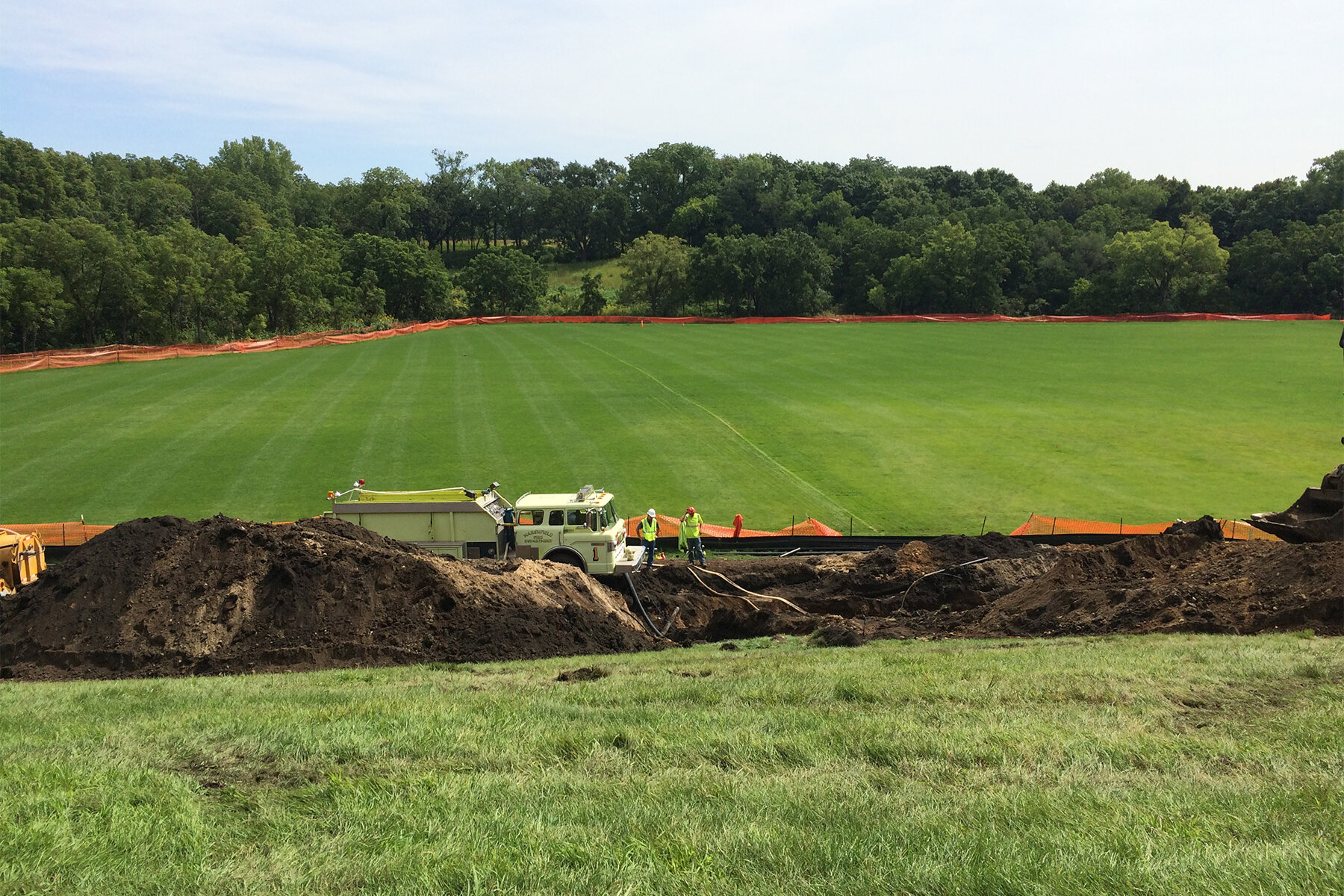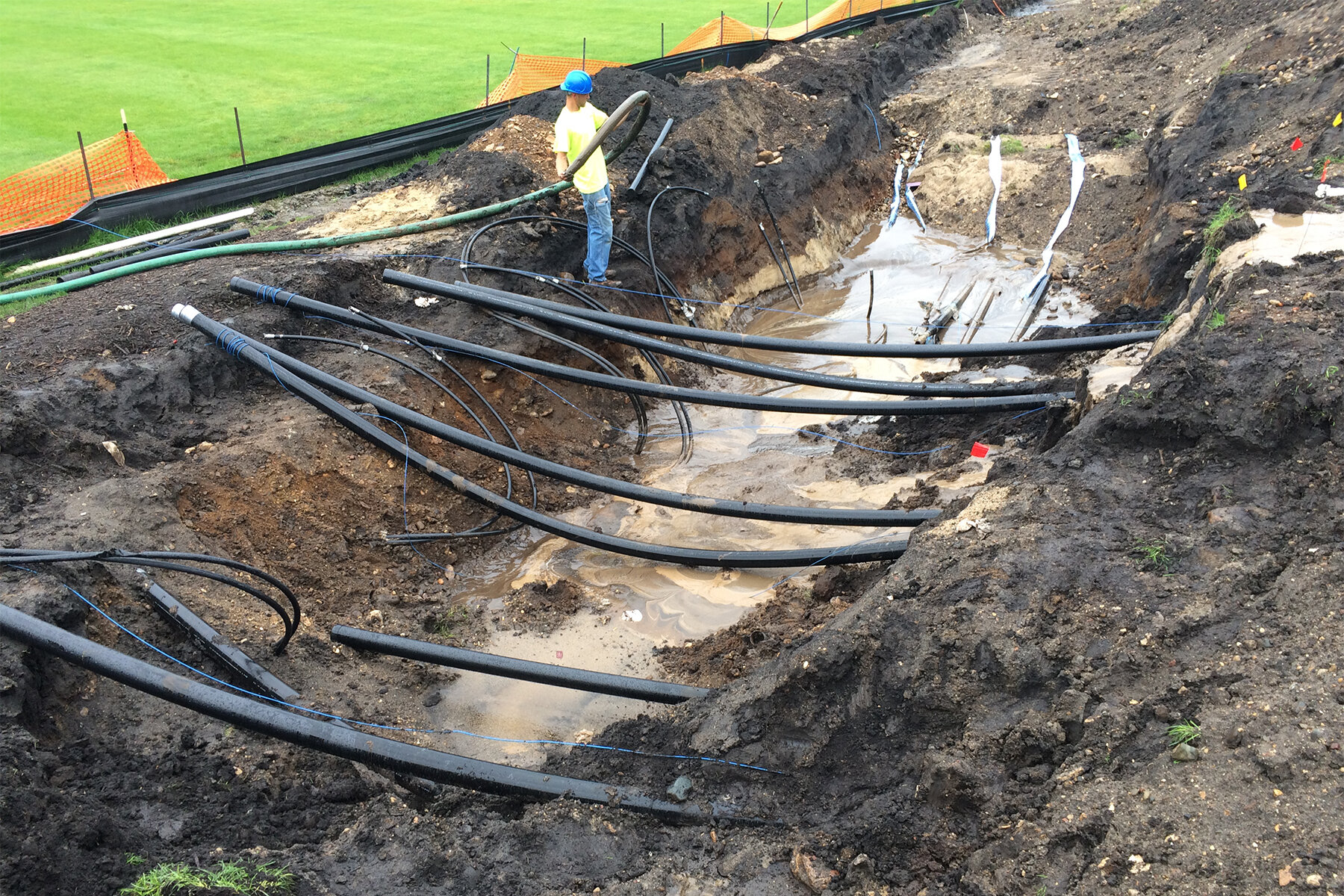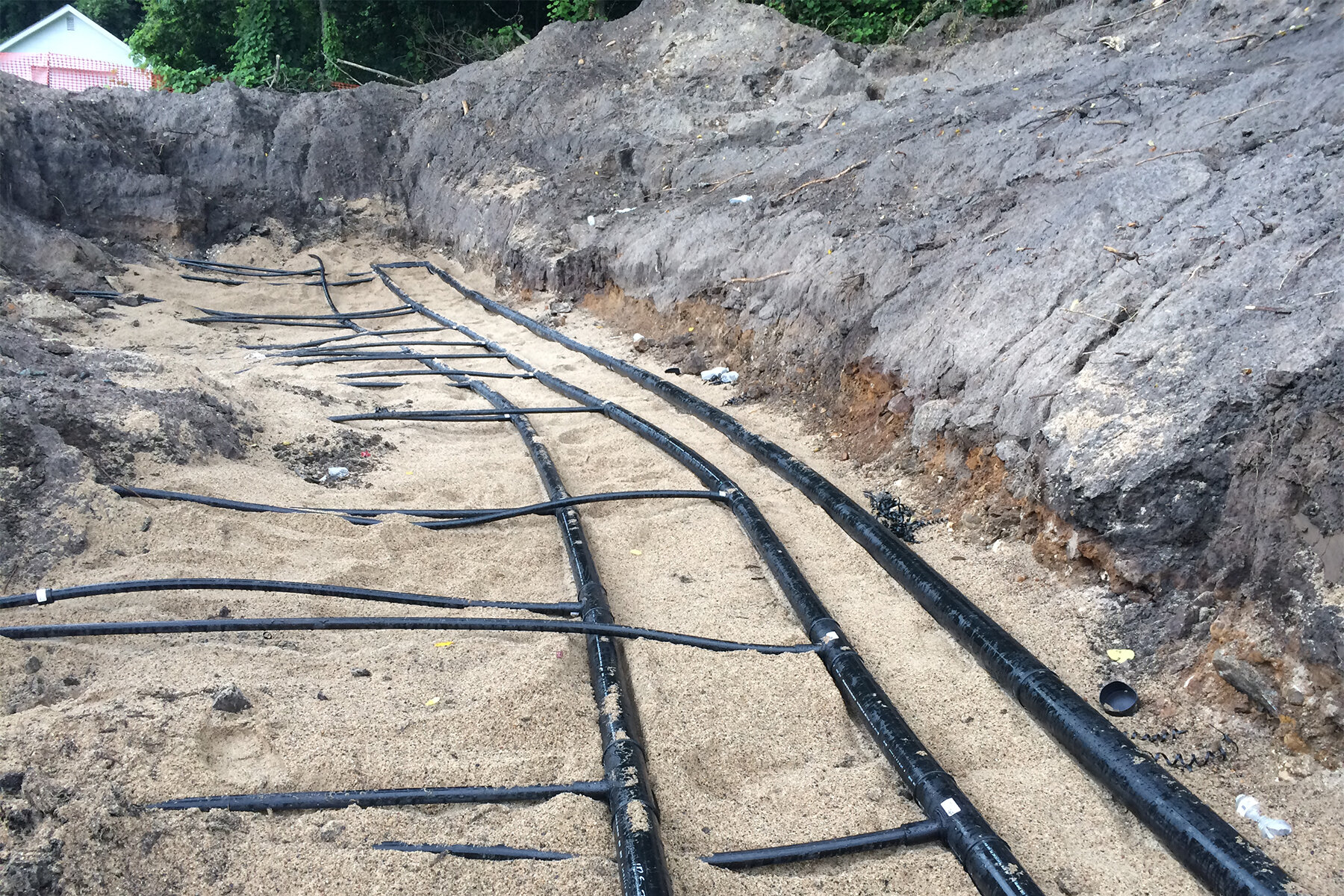Carleton College’s Geothermal Campus
The Northfield, Minnesota, college shut down its last boiler in May—a milestone in its commitment to a carbon-free campus by 2050
By Cinnamon Janzer | July 1, 2021
The East Energy Station in the sub-basement of Carleton’s new science building, Evelyn M. Anderson Hall. Photo courtesy of Carleton College.
FEATURE
Nearly a decade ago, Carleton College’s facilities team needed to address the campus’s aging heating and cooling system. The Northfield school’s steam plant had passed its centennial, and much of its piping and equipment was 70 or more years old. As the team began to strategize a phased replacement, they realized they had come to a fork in the road.
As Martha Larson, Carleton’s manager of campus energy and sustainability, puts it, “We asked ourselves, ‘Do we replace this steam system that was designed in the 1900s based on 1800s technology, or do we look around and see what today’s technology offers and take the leap to modernize?’” They opted for the latter.
On May 21, steam whistled through Carleton College’s pipes for the last time, marking a milestone in the school’s transition to geothermal heating. The transition will be complete this summer, when the last few campus buildings are connected to the new system. “We don’t have ambitions to grow [our facilities] dramatically, so we can focus on the quality of what we want to replace,” says Larson.
The two vertical bore fields (photos 1–4) contain bores running 520 feet deep. The horizontal bore field (photos 5–7) contains bores running 510 feet at 15 to 30 feet underground. Photos courtesy of Carleton College.
Even before the historic moment in May, the new system was already making a major difference. By last summer, with only half of the system online and in operation for less than a year, Carleton’s natural gas consumption had decreased by 40 percent and its overall energy use had dropped by almost 30 percent.
When the system is fully connected, 70 percent of the campus’s annual heating and cooling needs will be met by the system’s geothermal heat pump, which captures heat extracted from chilled water and delivers it directly to the campus heating loop or stores it in three on-campus bore fields—essentially large, underground thermal batteries. In two of the bore fields, 211 vertical bores run 520 feet deep. In the third, 94 horizontal bores stretch 510 feet at 15 to 30 feet underground
On the hottest days of the year, electric chillers will supplement cooling. On the coldest, high-efficiency condensing boilers will assist with heating. When operating at peak efficiency during periods of spring and fall when heating and cooling needs are balanced, the heat pump can generate more than six units of energy output for every unit of fuel input.
“When you change your whole distribution system from 330-degree-Fahrenheit steam to 120-degree hot water, you can make heat with many different technologies; you can use solar panels, heat pumps, efficient condensing boilers,” says Larson. These are the options that opened up to them once they transitioned the distribution system from steam to hot water.
When the system is fully connected, 70 percent of the campus’s annual heating and cooling needs will be met by the system’s geothermal heat pump, which captures heat extracted from chilled water and delivers it directly to the campus heating loop or stores it in three bore fields—essentially large, underground thermal batteries—around campus.
Steven Spehn, Carleton’s director of facilities, says that the school drew inspiration from Ball State University in Muncie, Indiana, which debuted a ground-source, closed-loop district geothermal energy system in 2012. “They had already ‘proved’ its use, [so] it wasn’t something brand new,” says Spehn.
The facilities team’s first step, says Spehn, was to get people involved who grasped the scope of the campus-wide project and could conduct a feasibility study to figure out if geothermal was viable. They turned to engineering firm MEP Associates, a Salas O’Brien Company, and the Austin, Texas, office of EYP, an architecture firm that Carleton had engaged to design its new science facility, Evelyn M. Anderson Hall.
The biggest challenge was figuring out where the system’s large energy station was going to go.
“We looked at several options, but there weren’t a lot of places to put it,” says Jeremy Oberc, senior principal and director of operations at EYP. After exploring rooftop and plaza sites for the new station, they settled on the sub-basement of the most energy-intensive building on campus.
“We were building the new science facility in the middle of campus where all the hot water lines could pass and meet up,” says Larson. Since they were already digging a hole, they decided to dig a deeper one and put the energy station beneath the new science facility.
Oberc says it took a lot of coordination with the engineers to arrange and install the giant pipes and equipment necessary to transport the hot water around the campus. But all agree the new system was well worth the effort. “It’s a fantastic option for the future,” says Oberc. “Carleton is helping to lead the way with its campus-wide move.”
Larson says Carleton takes seriously its responsibility to be a role model and to share its knowledge with others. Key to the school’s success, she says, was piggybacking the transition to geothermal on planned construction in the campus master plan. “It’s never too early to start thinking about how you would transition [your campus to low-temperature hot water distribution], because all of your planning decisions will then move in that direction,” says Larson. “If you get the guts right, then you’re in a much better position later on.”


